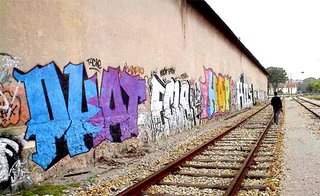The Broken Window Theory:

The epidemic theory of crime says that crime is contagious – just as fashion trend is contagious – that it can start with a broken window and spread to an entire community.
The ‘Broken Window’ theory tries to explain why certain areas / cities / places have a higher crime rate than others.
Broken widows was a brainchild of criminologists James Q. Wilson and George Kelling. Wilson and Kelling argued that crime is the inevitable result of disorder. If a window is broken and left unrepaired, people walking by will conclude that no one cares and no one is in charge. Soon, more windows will be broken, and the sense of anarchy will spread from the building to the street on which it faces, sending a signal that anything goes. In a city, relatively minor problems like graffiti, public disorder, and aggressive panhandling, they write are all equivalent of broken windows, invitation to more serious crimes.
This thesis suggests that the following sequence of events can be expected in deteriorating neighborhoods. Evidence of decay (accumulated trash, broken windows, deteriorated building exteriors) remains in the neighborhood for a reasonably long period of time. People who live and work in the area feel more vulnerable and begin to withdraw. They become less willing to intervene to maintain public order (for example, to attempt to break up groups of rowdy teens loitering on street corners) or to address physical signs of deterioration.
Sensing this, teens and other possible offenders become bolder and intensify their harassment and vandalism. Residents become yet more fearful and withdraw further from community involvement and upkeep. This atmosphere then attracts offenders from outside the area, who sense that it has become a vulnerable and less risky site for crime.

The "broken window" theory suggests that neighborhood order strategies such as those listed below, help to deter and reduce crime.
• Quick replacement of broken windows
• Prompt removal of abandoned vehicles
• Fast clean up of illegally dumped items, litter and spilled garbage
• Quick paint out of graffiti
• Finding (or building) better places for teens to gather than street corners
• Fresh paint on buildings
• Clean sidewalks and street gutters
As mayor of New York, Rudy Giuliani put the theory to work by strictly enforcing laws against small crimes - subway fare evasion, for example. As a result the crime rate (including serious crimes) in New York reduced by a considerable amount in past decade.
This theory has been widely put into practice by Police Departments through out the world. The ‘Broken Window Theory’ has inspired police departments in New York and other major cities to crack down on the small stuff in order to keep out the big stuff. It works: keeping on top of broken windows, graffiti, and other small infractions has reduced the serious crime level.
Does this theory apply to scenarios outside crime? Sure, it does. For example, building software projects...
Don't leave ‘broken windows’ (bad designs, wrong decisions, or poor code) unrepaired. Fix each one as soon as it is discovered. If there is insufficient time to fix it properly, then board it up. Perhaps you can comment out the offending code, or display a "Not Implemented" message, or substitute dummy data instead. Take some action to prevent further damage and to show that you're on top of the situation.
Functional systems deteriorate pretty quickly once windows start breaking. There are other factors that can contribute to software rot, but neglect accelerates the rot faster than any other factor.






No comments:
Post a Comment